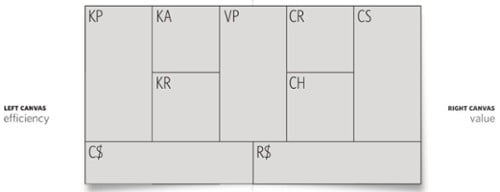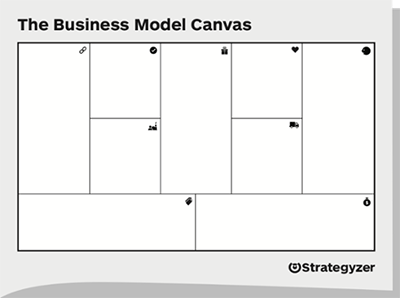Business model: What is it and why is it important?
Imagine that you are going to build your own house, the one you have dreamed of and for which you have been saving for years, you have everything in...
By Role
By Industry
By Target Customer
What We Offer
We drive business growth by improving operational efficiency through process optimization, smart automation, and cost control. Our approach boosts productivity, reduces expenses, and increases profitability with scalable, sustainable solutions
Customer Experience
We design memorable, customer-centered experiences that drive loyalty, enhance support, and optimize every stage of the journey. From maturity frameworks and experience maps to loyalty programs, service design, and feedback analysis, we help brands deeply connect with users and grow sustainably.
Marketing & Sales
We drive marketing and sales strategies that combine technology, creativity, and analytics to accelerate growth. From value proposition design and AI-driven automation to inbound, ABM, and sales enablement strategies, we help businesses attract, convert, and retain customers effectively and profitably.
Pricing & Revenue
We optimize pricing and revenue through data-driven strategies and integrated planning. From profitability modeling and margin analysis to demand management and sales forecasting, we help maximize financial performance and business competitiveness.
Digital Transformation
We accelerate digital transformation by aligning strategy, processes and technology. From operating model definition and intelligent automation to CRM implementation, artificial intelligence and digital channels, we help organizations adapt, scale and lead in changing and competitive environments.
Operational Efficiency
We enhance operational efficiency through process optimization, intelligent automation, and cost control. From cost reduction strategies and process redesign to RPA and value analysis, we help businesses boost productivity, agility, and sustainable profitability.
Customer Experience
Marketing & Sales
Pricing & Revenue
Digital Transformation
Operational Efficiency
3 min read
Por Aileen Pierce | May 29, 2025
3 min read
Por Aileen Pierce | May 29, 2025
If you have ever searched for "Business Model Canvas" on the internet, I assure you that the first results referred to Strategyzer, Alex Osterwalder and Yves Pigneur, and rightfully so, since it is their proposal. However, over the years new tools have appeared; variations of Osterwalder and Pigneur's Business Model Canvas applied to special cases or alternatives for the generation of successful businesses.
Index
First and foremost, Strategyzer is a strategy and operations consultancy that aims to "unlock the potential of millions of people to create value for themselves, organisations and society". Its co-founder is Alexander Osterwalder, who is interested in business models and developed his doctoral thesis in Management Informatics published in 2004 under the title: Ontology of Business Models.
Together with Yves Pigneur, they have created practical tools used by leading companies worldwide, such tools are: Business Model Canvas, Value Proposition Canvas and Business Portfolio Map. In 2010 they published the book "Business Model Generation" as a practical guide for the design of the business model canvas.

This book defines a business model as that which "describes the basis on which a company creates, delivers and captures value" and states that the best way to build a model is to divide it into nine basic modules, representing the main variables of a business. These elements are captured in the Business Model Canvas (BMC) in such a way that the right side of the canvas focuses on the customer (external factors) and the left side focuses on the company (internal factors), with the value proposition at the center as the element of exchange between business and customer.

The nine modules are:
To understand each of these and the BMC tool in general, you can watch the 2-minute video published by Strategyzer on its YouTube channel called Business Model Canvas Explained.
The first thing to consider, and this is recommended by Osterwalder himself, is 3 steps:

Now, if you are wondering how to fill in the canvas or what information to consider, here are the answers. Following the same order of the nine modules mentioned above, in each of them you must define a series of fundamental aspects for the functioning of your business.
What makes you choose between one company or another? The factor that makes you choose one of the options is the value proposition offered by the business. In this module you should describe the products or services that create value for the potential customer, i.e., solve a need.
To define it you can ask yourself:
Market segments
For a business to be profitable and survive it must have customers, therefore, in this module you define the people or entities that your company is targeting. Here you can ask yourself:
Channels
Once you have defined what you offer and to whom, it is time to determine the media. In this module you must define the communication, distribution, and marketing channels that you are going to use to bring the value proposition to the market segments.
To define this, you can ask yourself:
Customer relationships
You need to define the types of relationships you want with the market segments by asking yourself the following questions:
Sources of revenue
Here you need to define the cash flow of your business by asking yourself the following questions:
Key resources
To create and deliver the value proposition to the customer, it is necessary to have resources, and this module describes the key assets to make the business work. Therefore, it is necessary to ask the question:
Everything is based on processes; your business needs a series of actions to function. Like resources, this module describes the activities needed to create and deliver the value proposition to the customer.
Key partnerships
Here you need to define the networks of suppliers and partners you need to make the business work.
The key questions to ask are:
Cost structure
Having clarified the key resources, activities, and partnerships, you can go on to describe the costs incurred by the business to keep it going.

Imagine that you are going to build your own house, the one you have dreamed of and for which you have been saving for years, you have everything in...

In simple words, a business model is the way in which a company creates, delivers, and captures market value. There are different tools to study...

The ability of people to innovate never ceases to amaze us, companies are continuously developing innovative products. Despite their innovations,...